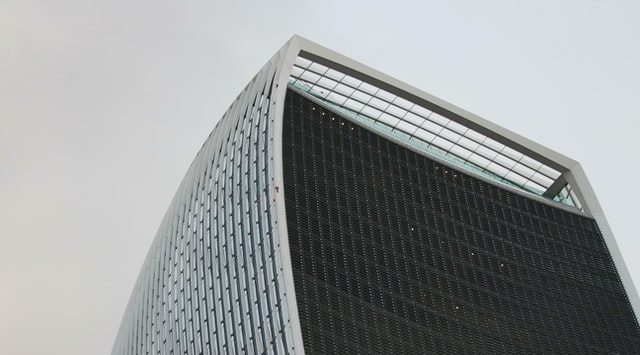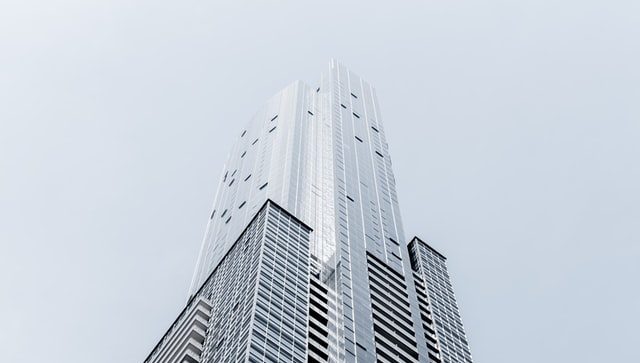You can find the ideal office space anywhere from skyscrapers to groundscrapers. Regardless of where you look for space, keep in mind that not all office space is created equal.
Whenever you look for office space, you will come across several grades. Various players in the real estate industry classify offices. However, not many people know about the classification. Therefore, they become confused whenever they go shopping around for office space.
In a nutshell, people grade offices based on general infrastructure, appearance, amenities, and age, among other criteria. Real estate brokers frequently classify offices. They do it to justify the rental cost they charge potential tenants. Additionally, there are other reasons why people grade offices.
What Is Grade A Office Space?
Grade A office space is the most sought-after type of office. These buildings are in very central locations, are newly built, have high-end amenities, and are very energy efficient.

Types Of Office Space Grades
There are three grades of office spaces. They include Grades A, B, and C. In some places, people might change the name of Grade A buildings to AA or A+. Grade B offices might be called Grade A. However, Grade C buildings do not get a name change. In some cases, brokers create sub-grades such as B- and C+. All these grades apply regardless of whether the office is in a skyscraper or groundscraper.
Before I explain what these grades mean, you should know there is no official grading system. Players in the real estate industry developed these conventions to create order. The following are some explanations of what the grades mean.
Grade A Buildings
These buildings are the most sought-after because of their stellar condition and prime location. You can find Grade A offices in new groundscraper or high-rises.
Since the buildings are new, they have state-of-the-art fixtures, amenities, and climate control. The office spaces are in important business locations such as city centers.
Grade A buildings have pleasing facades and are in places where they are easily visible. They are also impeccably maintained by high-end property managers.
Grade B Buildings
They are less costly to lease compared to Grade A. However, they are usually still in a good state of repair. Grade B buildings have slightly lower quality fixtures but are still serviceable. The construction of the buildings is also not as elegant as their Grade A counterparts. The takeaway is that the facilities of Grade B are fully functional.
The location of Grade B buildings, as well as their building system, is above average. Additionally, the buildings fit companies looking to rent office space without breaking the bank.
Aside from the construction and appearance, Grade B buildings are usually not brand new. Many of these buildings have less than four stories.
Grade B buildings often start as Grade A. However, when they show visible wear, they are downgraded. Some places downgrade buildings ten years after construction.
Grade C Buildings
They are older buildings that have gone into disrepair. It is not uncommon to find Grade C office space in a Groundscraper. Since Groundscraper construction has slowed down, most existing ones are often older.
Many Grade C office spaces are in far-flung parts of cities. These are less desirable areas where there is not much business going on.
A tell-tale factor that sets Grade C buildings apart is their need for repairs or upgrades. If you are curious about their age, most Grade C buildings are 20 years or more.
Grade C buildings have a lot of unoccupied space. The lack of tenants drives landlords to reduce rent. As a result, most tenants are on shoestring budgets or don’t mind being far from the city.
Grade C buildings are usually in their state because of neglect. If you renovate a Grade C building, it could move up to Grade B. However, it cannot go all the way to Grade A.
How Does a Grade A Office Look Like?
A Grade A office is a brand new or recently renovated building located in the Central Business District CBD or close to it. This definition is not set in stone, though. Sometimes a new building could fail to get the Grade A status. These are some of the things you can expect from a Grade A building.
- A bold facade
- Large lobby
- Around-the-clock security
- Ample parking
- A food court
- Fitness center
- Childcare facilities, and more.
Only the best property managers can be managing a Grade A building. These buildings have huge offices, large windows, raised floors, wide or sometimes no columns. Furthermore, these buildings attract big corporates as their clients.

How Do You Decide If A Building Is Grade A?
I cannot mention enough that there is no formula for grading buildings. However, there are seven factors that you can use to identify a Grade A office building.
1 | Location
When looking for any property, the location always has a pivotal role in its cost. Many Grade A buildings are in the heart of a city. However, sometimes a building can be away from the Central Business District but still be Grade A. The reasons such a building can get Grade A status depend on its unique circumstances. If you are looking for Grade A office space, the CBD is the place you are most likely to find it.
2 | The Building
When you walk around a city, you come across too many buildings to figure out their grades. Sometimes a laid-back Groundscraper can surprise you by getting a Grade A status while others fail. However, many Grade A offices are in skyscrapers. Worldwide, taller buildings get a high rating compared to low-rise buildings.
Skyscrapers are easy to spot — there is almost always a skyscraper going up. These buildings win the hearts of tenants with their glass-clad walls.
3 | The Lobby
Every Grade A building must have a posh lobby. Whether it’s a low- or a high-rise, it should have the following features at least.
- Sheltered drop-off
- Large glass doors
- Premium height
- High-quality materials for walls
- Stone floors
4 | Office Space
A large amount of office space is virtually mandatory for a Grade A building. Multi-national companies that need upwards of 10,000 square feet usually rent Grade A office space.
Sometimes the companies require more space than that. The current trend is that companies are looking to lease office space in buildings with a lot of square footage on a single level. The Groundscraper is regaining popularity because of this demand.
Sometimes it is hard to find offices smaller than 2000 square feet in Grade A buildings.
Many floors in Grade A buildings have cable trucking underneath. As a result, they often tend to be raised. Offices in these buildings have large windows to allow a lot of natural light to come in. The windows also improve views of the surrounding. Grade A offices have a lot of vertical room. Sometimes an office could have up to 10 feet from the floor to ceiling.
The layout of office space is becoming more important for clients. In the past, tenants were happy with buildings that had private offices and cubicles. Today’s corporate tenants want large open areas where they can organize people in inventive ways. The Groundscraper is an ideal building for these tenants because of its vast horizontal spaces.
5 | Tenant Mix
Property managers of Grade A buildings carefully select their tenants. They usually look for established companies that will stay for a long time. These tenants can also afford high rental fees. Consequently, the landlord gets the funds to maintain the building and has enough to spare.
6 | Building Amenities
A Grade A building must have more than just basic amenities. The following are eight things you could expect from it.
- Covered car park
- In-house food court
- Conference facilities
- Outdoor space with lush greenery
- Shower
- Bicycle parking
- Childcare center
- Fitness center
7 | Environmental Friendliness
Green buildings are very popular these days. Companies looking for Grade A office space want environmentally friendly buildings. They often find themselves renting space at a groundscraper. Sure, more green towers are coming up, but it’s hard for them to beat the energy efficiency of a low-rise building.
What Type of Tenants Rents Grade A Office Space?
The property managers of Grade A buildings prefer to rent the space out to large corporate tenants. Sometimes they fiercely compete for these tenants. In the old days, Grade A office space was dedicated to banks, insurance companies, and other players in the financial industries. Today, however, there is a diversified list of clients that rent the office space.

Where Can You Find Grade A Office Space?
Online
The most convenient way is to go online. Search for real estate agents and property managers in your area and contact them with your needs. They will usually get back to you with information about available office space in your area.
Do not mention if you prefer space in a low- or high-rise building. If you do, you will narrow down your options considerably. You might end up finding a great office space in a Groundscraper when you were looking for offices in high-rise buildings only.
Physically visit promising buildings.
Not all information about office spaces is on the Internet. Therefore, take time to go around the city and ask around. You might want to jot down a list of requirements you want in an office space. Bring this list up whenever you find an office space that looks promising.
Conclusion
The lack of official guidelines on how to grade buildings confuses many people. Sometimes landlords make things worse by rewarding themselves with grades they don’t deserve.
Fortunately, even though the grading is subjective, most people can use guides like this one to figure things out themselves. Sometimes there are grey areas when differentiating Grade A from B. However, it is unlikely that someone would confuse a Grade C building with a Grade A one.
The real estate market has finally picked up after the devastating effects of the pandemic. Companies that had downgraded their offices are now going back to their preferred types of office spaces.
If you want to learn more about commercial real estate, smart buildings, smart cities, and PropTech, feel free to take a look at our other blog articles.

